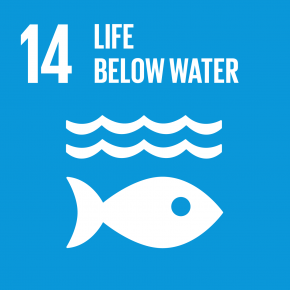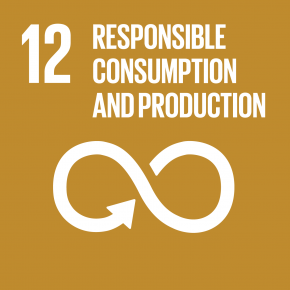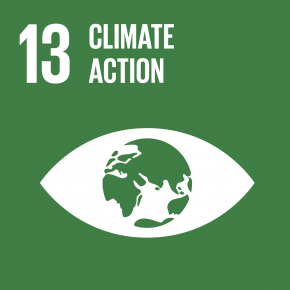|
Title |
Professor |
|
Researcher Number(JSPS Kakenhi) |
20398308 |
|
|
|
Fujimura Hiroyuki
|
|
|
Current Affiliation Organization 【 display / non-display 】
-
Duty University of the Ryukyus Faculty of Science Chemistry, Biology and Marine Science Professor
-
Concurrently University of the Ryukyus Graduate School of Engineering and Science Chemistry, Biology and Marine Science Professor
-
Concurrently University of the Ryukyus Graduate School of Engineering and Science Marine and Environmental Sciences Professor
External Career 【 display / non-display 】
-
2004.10-2006.03
University of the Ryukyus
-
2004.10-2006.03
University of the Ryukyus, Faculty of Science, Postdoctoral fellow
-
2006.07-2009.06
University of the Ryukyus
-
2006.07-2009.06
University of the Ryukyus, Faculty of Science, Department of Chemistry, Biology, and Marine Science, Analytical and Inorganic Chemistry, Assistant Research
-
2009.07-2019.06
University of the Ryukyus
Affiliated academic organizations 【 display / non-display 】
-
American Geophysical Union
-
The Japanese-French Oceanographic Society
-
The Japan Society for Analytical Chemistry
-
The Geochemical Society of Japan
-
Japanese Coral Reef Society
Research Interests 【 display / non-display 】
-
Biogeochemistry
-
Carbonate Chemistry
-
calcification
-
carbonate
-
antioxidative enzyme
Research Areas 【 display / non-display 】
-
Environmental Science/Agriculture Science / Environmental dynamic analysis
-
Nanotechnology/Materials / Analytical chemistry
-
Nanotechnology/Materials / Green sustainable chemistry and environmental chemistry
Research Theme 【 display / non-display 】
-
Vertical profiles of carbonate system and ocean acidification in east chaina sea
-
Antioxidase activity of coral under heat stress condition
-
Chemical pollutants in costal area and the effects on coral
-
Carbon metabolisms of photosynthesis and calcification in coral reef
Published Papers 【 display / non-display 】
-
Vegetation variety affected by local environments in a coral reef lagoon
Kandai Tozaki, Gregory N. Nishihara, Azusa Kawate, Teruko Konishi, Yoichi Sato, Michihiro Ito, Hiroyuki Fujimura, Atsuko Tanaka
Phycological Research ( Wiley ) 72 ( 2 ) 112 - 122 2024.04 [ Peer Review Accepted ]
Type of publication: Research paper (scientific journal)
-
Access this article
-
-
HIGUCHI Tomihiko, MIYAJIMA Toshihiro, TAKAGI Toshiyuki, YUYAMA Ikuko, AGOSTINI Sylvain, NAKAMURA Takashi, FUJIMURA Hiroyuki
Journal of the Japanese Coral Reef Society ( The Japanese Coral Reef Society ) 26 ( 1 ) 19 - 37 2024 [ Peer Review Accepted ]
Type of publication: Research paper (scientific journal)
-
Access this article
-
Search related information
-
-
Yoichi Sato, Eri Inomata, Hikari Nagoe, Michihiro Ito, Teruko Konishi, Hiroyuki Fujimura, Atsuko Tanaka & Gregory N. Nishihara
Journal of Applied Phycology ( Journal of Applied Phycology ) 35 ( 1 ) 265 - 275 2023.02 [ Peer Review Accepted ]
Type of publication: Research paper (scientific journal)
-
Access this article
-
-
Ide K, Nakano Y, Ito M, Nishikawa Y, Fujimura H, Takeyama H
Marine biotechnology (New York, N.Y.) ( Marine Biotechnology ) 24 ( 6 ) 1176 - 1176 2022.10 [ Peer Review Accepted ]
Type of publication: Research paper (scientific journal)
-
Access this article
-
Search related information
-
-
Ide K, Nakano Y, Ito M, Nishikawa Y, Fujimura H, Takeyama H
Marine biotechnology (New York, N.Y.) ( Marine Biotechnology ) 24 ( 5 ) 871 - 881 2022.10 [ Peer Review Accepted ]
Type of publication: Research paper (scientific journal)
-
Access this article
-
Search related information
-
Presentations 【 display / non-display 】
-
Behavior of Aluminum and DOC in waters of the Gesashi mangrove estuary, Okinawa, Japan
Kombo Mohamed, Bakari Said, Okada Koichiro, Fujimura Hiroyuki, Shinjo Ryuichi, Tokuyama Akira
日本地球化学会年会要旨集 2005 - 2005
Grant-in-Aid for Scientific Research 【 display / non-display 】
SDGs 【 display / non-display 】
-
サンゴの白化現象解明による白化防止およびサンゴの救済

-
サンゴ礁におけるマイクロプラスとチックの動態と造礁サンゴへの影響


-
個人レベルによる再生可能エネルギー導入の可能性と実践






